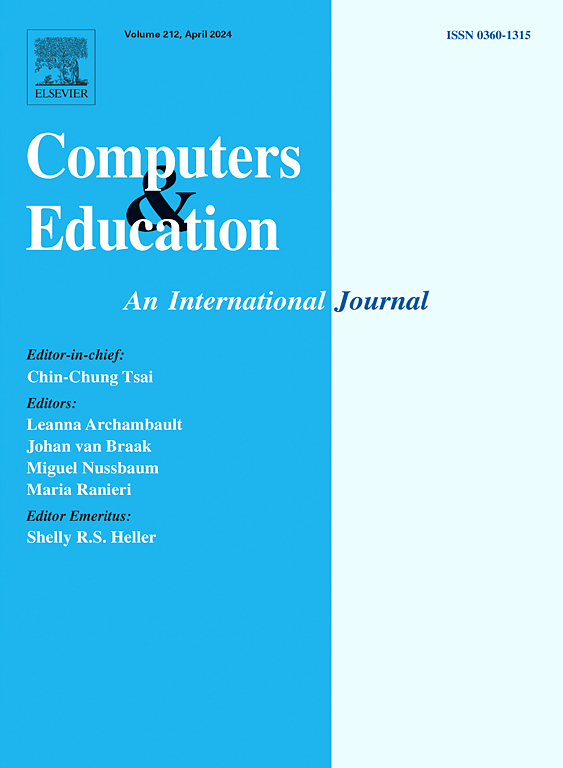开放的教育实践能培养开放的思维吗?探讨直接和间接影响及其他影响因素
IF 10.5
1区 教育学
Q1 COMPUTER SCIENCE, INTERDISCIPLINARY APPLICATIONS
引用次数: 0
摘要
高等教育越来越多地采用开放教育实践(OEPs),需要进行实证研究,以了解它们对学习者的影响,特别是在培养开放思维作为关键学习成果方面。此外,个人特质、课程设计和文化因素在形成开放思维中的作用仍未得到充分探讨,特别是在不同的国家背景下。本研究旨在通过研究oep暴露对开放思维和其他影响因素的直接和间接影响来解决这些差距。数据收集自4个国家(韩国、日本、美国和菲律宾)的667名参与者。我们测量了oep暴露、个体因素(如人口统计学、外向性格、技术接受态度)、课程因素(如以学习者为中心的活动、支持、控制)、文化因素(如背景、多元文化经历)和开放思维。层次多元回归、调节和中介分析以及结构方程模型(SEM)用于探索直接、间接和调节效应,而多组SEM用于评估这些变量之间关系的跨国差异。研究结果显示,开放式电位暴露对开放式思维的培养有显著影响,技术接受态度是一个重要的中介因素。虽然外向性格、多元文化经历和技术接受等个人因素的直接或间接影响有限,但以学习者为中心的课程设计已成为促进开放思维的关键因素。韩国、日本、美国和菲律宾的文化差异很明显,这表明这些因素之间的关系因环境而异,以不同的方式塑造了开放思维的发展。本文章由计算机程序翻译,如有差异,请以英文原文为准。
Does exposure to open educational practices foster open thinking? Exploring direct and indirect effects and other influential factors
The growing adoption of open educational practices (OEPs) in higher education calls for empirical research to understand their impact on learners, particularly in fostering open thinking as a key learning outcome. Moreover, the roles of individual traits, course design, and cultural factors in shaping open thinking remain underexplored, especially across different national contexts. This study aims to address these gaps by examining the direct and indirect effects of exposure to OEPs on open thinking and other influential factors. Data were collected from 667 participants across four countries (South Korea, Japan, the U.S., and the Philippines). Exposure to OEPs, individual factors (e.g., demographics, extroverted personality, technology acceptance attitudes), course factors (e.g., learner-centered activities, support, control), cultural factors (e.g., background, multicultural experiences), and open thinking were measured. Hierarchical multiple regression, moderation and mediation analyses, and structural equation modeling (SEM) were employed to explore direct, indirect, and moderating effects, whereas multi-group SEM was used to assess cross-national differences in the relationships between these variables. The findings highlight the significant impact of OEP exposure on fostering open thinking, with the technology acceptance attitude serving as a crucial mediating factor. While individual factors such as having extroverted personality, multicultural experience, and technology acceptance have shown limited direct or indirect influence, learner-centered course design has emerged as a key factor in promoting open thinking. Cultural differences across South Korea, Japan, the U.S., and the Philippines were evident, indicating that the relationships among these factors vary by context, shaping the development of open thinking in distinct ways.
求助全文
通过发布文献求助,成功后即可免费获取论文全文。
去求助
来源期刊

Computers & Education
工程技术-计算机:跨学科应用
CiteScore
27.10
自引率
5.80%
发文量
204
审稿时长
42 days
期刊介绍:
Computers & Education seeks to advance understanding of how digital technology can improve education by publishing high-quality research that expands both theory and practice. The journal welcomes research papers exploring the pedagogical applications of digital technology, with a focus broad enough to appeal to the wider education community.
 求助内容:
求助内容: 应助结果提醒方式:
应助结果提醒方式:


